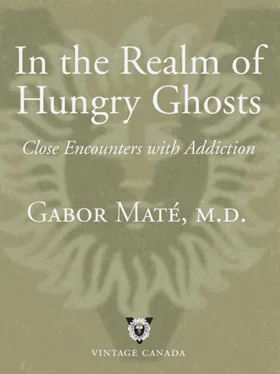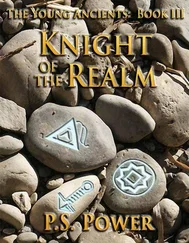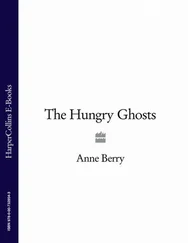All mammalian mothers—and many human fathers, as well—give their infants sensory stimulation that has long-term positive effects on their offspring’s brain chemistry. Such sensory stimulation is so necessary for the human infant’s healthy biological development that babies who are never picked up simply die. They stress themselves to death. Premature babies who have to live in incubators for weeks or months have faster brain growth if they are stroked for just ten minutes a day. When I learned such facts in the research literature, I recalled with appreciation a custom I had often observed among my Indo-Canadian patients during my years in family practice. As they were speaking with me during their early post-natal visits, these mothers would massage their babies all over their bodies, gently kneading them from feet to head. The infants were in bliss.
Humans hold and cuddle and stroke; rats lick. A 1998 study found that rats whose mothers had given them more licking and other kinds of nurturing contact during their infancy had, as adults, more efficient brain circuitry for reducing anxiety. They also had more receptors on their nerve cells for benzodiazepines, which are natural tranquilizing chemicals found in the brain. 6I think here of my many patients who, on top of cocaine and heroin addictions, have been hooked since their adolescence on street-peddled “benzo” drugs like Valium to calm their jangled nervous systems. For a dollar a tablet, they get an artificial hit of the benzodiazepines their own brains can’t supply. Their need for tranquilizers says much about their infancy and early childhood.
Parental nurturing determines the levels of other key brain chemicals, too—including serotonin, the mood messenger enhanced by antidepressants like Prozac. Peer-reared monkeys, separated from their mothers in laboratory experiments, have lower lifelong levels of serotonin than monkeys brought up by their mothers. In adolescence these same monkeys are more aggressive and are far more likely to consume alcohol in excess. 7We see similar effects with other neurotransmitters that are essential in regulating mood and behaviour, such as norepinephrine. 8Even slight imbalances in the availability of these chemicals are manifested in aberrant behaviours like fearfulness and hyperactivity, and increase the individual’s sensitivity to stressors for a lifetime. In turn, such acquired traits increase the risk of addiction.
Another effect of early maternal deprivation appears to be a permanent decrease in the production of oxytocin, *18which, as mentioned in Chapter 14, is one of our love chemicals. 9It is critical to our experience of loving attachments and even to maintaining committed relationships. People who have difficulty forming intimate relationships are at risk for addiction; they may turn to drugs as “social lubricants.”
Not only can early childhood experience lead to a dearth of “good” brain chemicals; it can also result in a dangerous overload of others. Maternal deprivation and other types of adversity during infancy and childhood result in chronically high levels of the stress hormone cortisol. In addition to damaging the midbrain dopamine system, excess cortisol shrinks important brain centres such as the hippocampus—a structure important for memory and for the processing of emotions—and disturbs normal brain development in many other ways, with lifelong repercussions. 10Another major stress chemical that’s permanently overproduced after insufficient early maternal contact is vasopressin, which is implicated in high blood pressure. 11
A child’s capacity to handle psychological and physiological stress is completely dependent on the relationship with his parent(s). Infants have no ability to regulate their own stress apparatus, and that’s why they will stress themselves to death if they are never picked up. We acquire that capacity gradually as we mature—or we don’t, depending on our childhood relationships with our caregivers. A responsive, predictable nurturing adult plays a key role in the development of our healthy stress-response neurobiology. 12
In the words of one researcher, “maternal contact alters the neurobiology of the infant.” *19 13Children who suffer disruptions in their attachment relationships will not have the same biochemical milieu in their brains as their well-attached and well-nurtured peers. As a result their experiences and interpretations of their environment, and their responses to it, will be less flexible, less adaptive and less conducive to health and maturity. Their vulnerability will increase, both to the mood-enhancing effect of drugs and to becoming drug dependent. We know from animal studies, for example, that early weaning can have an influence on later substance intake: rat pups weaned from their mothers at two weeks of age had, as adults, a greater propensity to drink alcohol than pups weaned just one week later. 14

The statistics that reveal the typical childhood of the hardcore drug addict have been reported widely but, it seems, not widely enough to have had the impact they ought to on mainstream medical, social and legal understandings of drug addiction.
Studies of drug addicts repeatedly find extraordinarily high percentages of childhood trauma of various sorts, including physical, sexual and emotional abuse. One group of researchers was moved to remark that “our estimates…are of an order of magnitude rarely seen in epidemiology and public health.” 15Their research, the renowned Adverse Childhood Experiences (ACE) Study, looked at the incidence of ten separate categories of painful circumstances—including family violence, parental divorce, drug or alcohol abuse in the family, death of a parent and physical or sexual abuse—in thousands of people. The correlation between these figures and substance abuse later in the subjects’ lives was then calculated. For each adverse childhood experience, or ACE, the risk for the early initiation of substance abuse increased two to four times. Subjects with five or more ACEs had seven to ten times greater risk for substance abuse than those with none.
The ACE researchers concluded that nearly two-thirds of injection drug use can be attributed to abusive and traumatic childhood events—and keep in mind that the population they surveyed was a relatively healthy and stable one. A third or more were college graduates, and most had at least some university education. With my patients, the childhood trauma percentages would run close to one hundred. Of course, not all addicts were subjected to childhood trauma—although most hardcore injection users were—just as not all severely abused children grow up to be addicts.
According to a review published by the [U.S.] National Institute on Drug Abuse in 2002, “the rate of victimization among women substance abusers ranges from 50% to nearly 100%…Populations of substance abusers are found to meet the [diagnostic] criteria for post-traumatic stress disorder…those experiencing both physical and sexual abuse were at least twice as likely to be using drugs than those who experienced either abuse alone.” 16Alcohol consumption has a similar pattern: those who had suffered sexual abuse were three times more likely to begin drinking in adolescence than those who had not. For each emotionally traumatic childhood circumstance, there is a two-to-threefold increase in the likelihood of early alcohol abuse. “Overall, these studies provide evidence that stress and trauma are common factors associated with consumption of alcohol at an early age as a means to self-regulate negative or painful emotions,” 17write the ACE researchers.
It’s just as many substance addicts say: they self-medicate to soothe their emotional pain—but more than that, their brain development was sabotaged by their traumatic experiences. The systems subverted by addiction—the dopamine and opioid circuits, the limbic or emotional brain, the stress apparatus and the impulse-control areas of the cortex—just cannot develop normally in such circumstances.
Читать дальше













